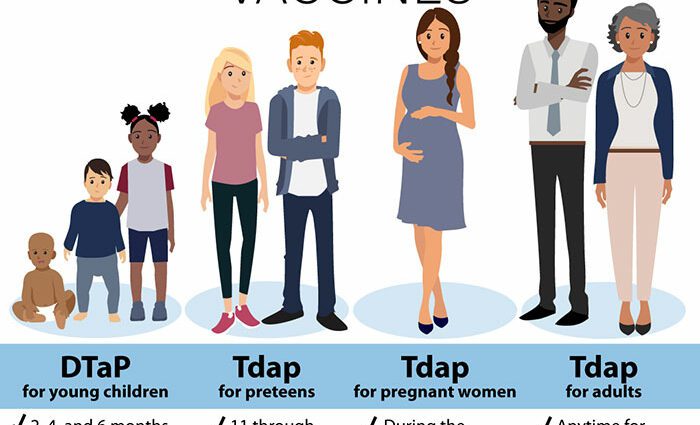Whooping cough
Whooping cough is a highly contagious respiratory disease of bacterial origin. Generally not serious, it is characterized by a strong cough. It evolves slowly, over a few weeks and can last nearly two months. The incubation period, that is, the time between infection with the bacteria and the first symptoms, can be as long as 20 days. The bacteria mainly attacks the trachea and bronchi, where mucus accumulates. The body tries to get rid of these secretions by coughing. The bacteria also generate inflammation of the airways which makes it difficult to breathe.
In infants, whooping cough can have very serious consequences, such as pulmonary or neurological complications. It can even be fatal1.
Today there is a vaccin against whooping cough. Prior to its use in the 1960s in France and Canada, whooping cough was a very common childhood disease that children passed on to each other. Today, contamination is more between an adult who is not up to date with his vaccination and a young child who has not yet received all the doses of vaccines or who has not been vaccinated.
Despite the existence of a vaccine, there are estimated to be 50 million cases and 300.000 deaths from pertussis worldwide each year2.
Causes
Whooping cough is caused by a bacteria called Bordetella pertussis. When a person is infected, they can in turn infect those around them simply by coughing or sneezing. The sick person is very contagious at the start of his illness.
Complications
Complications most often affect infants and especially babies under 6 months. They may suffer from an ear infection, difficulty in breathing, weight loss caused by severe vomiting, pneumonia, dehydration, kidney failure, seizures or even heart failure. brain damage. These complications serious remain rare but require rapid hospital treatment.
In older children and adults, complications are even rarer and less serious. It could be a cracked rib, abdominal hernia, nosebleed, or swelling of the face.
Diagnostic
Early diagnosis is sometimes difficult to establish since the first signs resemble any symptoms caused by a classic respiratory infection such as a cold, flu or bronchitis. The doctor will be able to recognize whooping cough later on by his characteristic cough.
In order to confirm the diagnosis, the doctor may perform tests to detect the presence of the bacteria Bordetella in the patient’s nose or throat (taking cells with a cotton swab in order to analyze them). A blood test can also be used to check for whooping cough. In the event of infection, the number of white blood cells is abnormally high, a sign that the body is fighting it.










